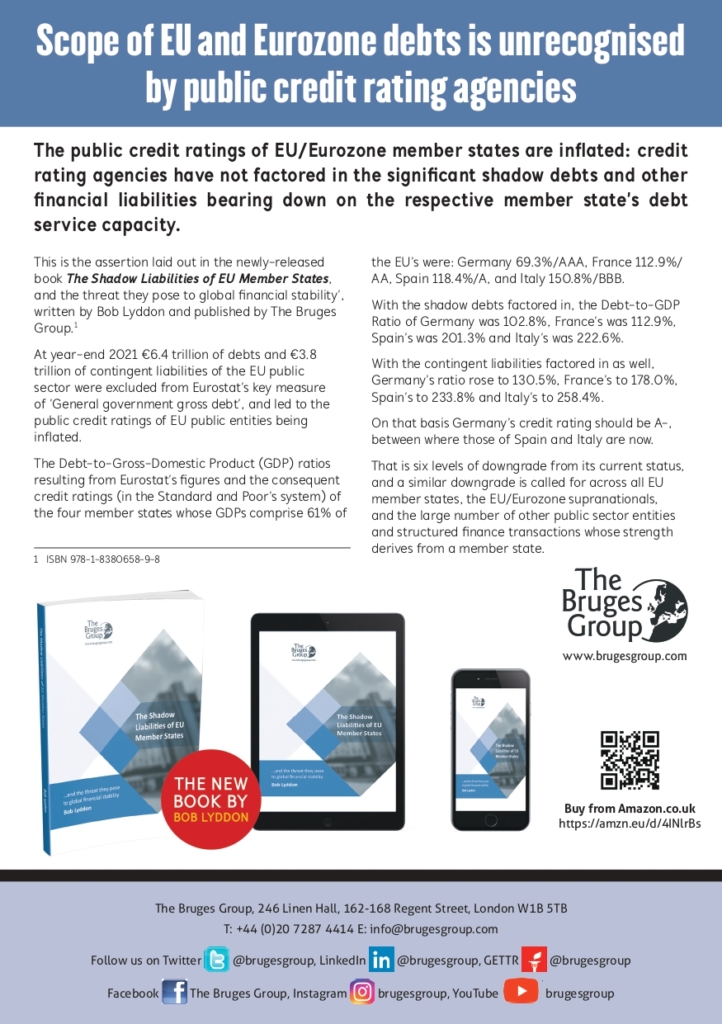Published on 16th April 2023
The public credit ratings of EU/Eurozone member states are inflated, because the credit rating agencies have not factored in the significant shadow debts and other financial liabilities bearing down on the respective member state’s debt service capacity. Total financial liabilities are much higher than these agencies appear to recognize.
This is the assertion laid out in the newly-released book ‘The shadow liabilities of EU Member States, and the threat they pose to global financial stability’, written by Bob Lyddon and published by The Bruges Group.[1]
Four public credit rating agencies are approved by the EU to issue ratings: Moody’s Investor Service, Standard and Poor’s, Fitch Ratings and DBRS. They issue ratings not just for member states themselves, but for the EU and the EU/Eurozone supranationals like the European Stability Mechanism whose creditworthiness derives from the creditworthiness of the member states.
The anchor figures for the indebtedness of member states are (i) their ‘General government gross debt’; and (ii) its relationship to Gross Domestic Product or GDP. Eurostat issues figures for both. At year-end 2021 Eurostat recorded the EU’s ‘General government gross debt’ as €13.0 trillion and its GDP as €14.5 trillion, resulting a Debt-to-GDP ratio of 90%.
The Debt-to-GDP ratios and credit ratings (in the Standard and Poor’s system) of the four member states whose GDPs comprise 61% of the EU’s were 150.8% for Italy (BBB), 118.4% for Spain (A), 112.9% for France (AA), and 69.3% for Germany (AAA).
The rating agencies seem not to have noticed the liabilities of the EU public sector that are excluded from ‘General government gross debt’ but which track back onto the member states. These amount to debts of around €6.4 trillion (such as the debts of the EU itself and of central banks within the TARGET2 payment system), and contingent liabilities of around €3.8 trillion (such as for potential losses by the ECB on its operations).
The addition of the debts would raise the Debt-to-GDP Ratios of Germany to 102.8%, of France to 112.9%, of Spain to 201.3% and of Italy to 222.6%.
It is even worse when the contingent liabilities are factored in as well: Germany’s ratio goes to 130.5%, France’s to 178.0%, Spain’s to 233.8% and Italy’s to 258.4%.
Across the EU as a whole the understatement is 44% if one takes account of the debts, and by 70% if one factors in the shadow contingent liabilities as well.
These figures imply the need for a comprehensive downgrading of all EU member states, of the EU/Eurozone supranationals whose creditworthiness is based on the member states, and of the large number of other public sector entities and structured finance transactions whose strength is a member state. A downgrading by five levels would not mismatch to the scale of the issue.
Germany an A-rated credit risk? You’d better believe it.
[1] ISBN 978-1-8380658-9-8

